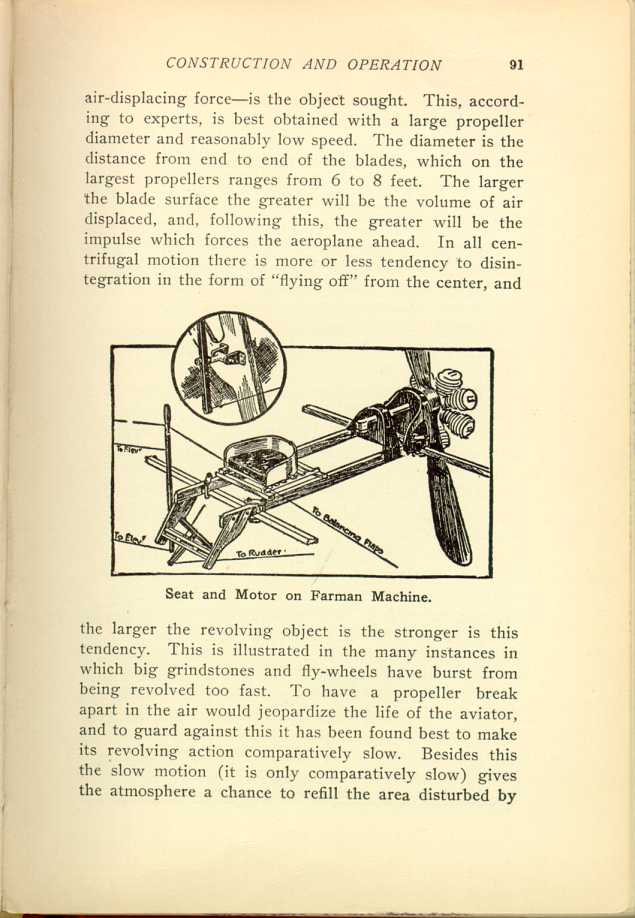| CHAPTER IX.
SELECTION OF THE MOTOR. Flying Machines: Construction and Operation: A Practical Book Which Shows, in Illustrations, Working Plans and Text, How to Build and Navigate the Modern Airship. | ||
Kinds of Propellers Used.
One of the most simple is that used by Curtiss. It consists of two pear-shaped blades of laminated wood, each blade being 5 inches wide at its extreme point, tapering slightly to the shaft connection. These blades are joined at the engine shaft, in a direct line. The propeller has a pitch of 5 feet, and weighs, complete, less than 10 pounds. The length from end to end of the two blades is 6 1/2 feet.
Wright uses two wooden propellers, in the rear of his biplane, revolving in opposite directions. Each propeller is two-bladed.
Bleriot also uses a two-blade wooden propeller, but it is placed in front of his machine. The blades are each about 3 1/2 feet long and have an acute "twist."
Santos-Dumont uses a two-blade wooden propeller, strikingly similar to the Bleriot.
On the Antoinette monoplane, with which good records have been made, the propeller consists of two spoon-shaped pieces of metal, joined at the engine shaft in front, and with the concave surfaces facing the machine.
The propeller on the Voisin biplane is also of metal, consisting of two aluminum blades connected by a forged steel arm.
Maximum thrust, or stress—exercise of the greatest

Seat and Motor on Farman Machine.
[Description: Black and white illustration: Motor and seating.]| CHAPTER IX.
SELECTION OF THE MOTOR. Flying Machines: Construction and Operation: A Practical Book Which Shows, in Illustrations, Working Plans and Text, How to Build and Navigate the Modern Airship. | ||